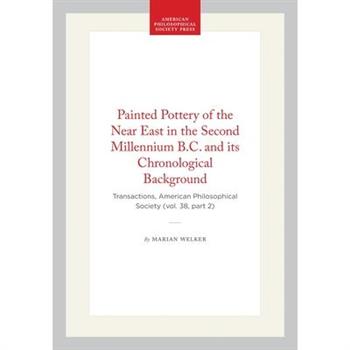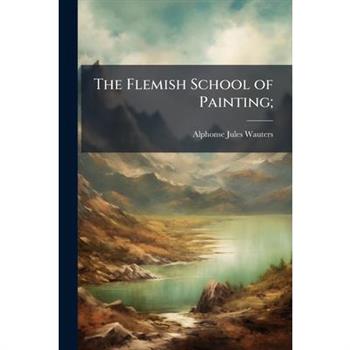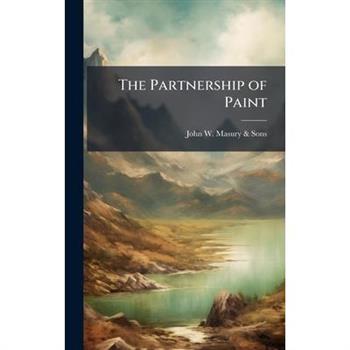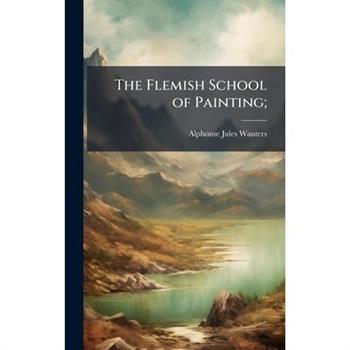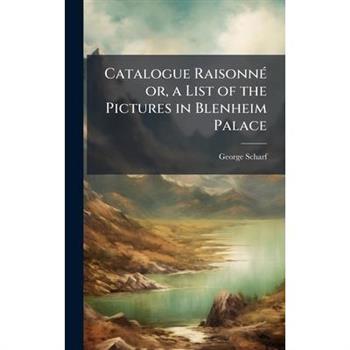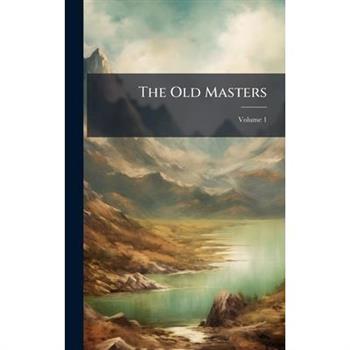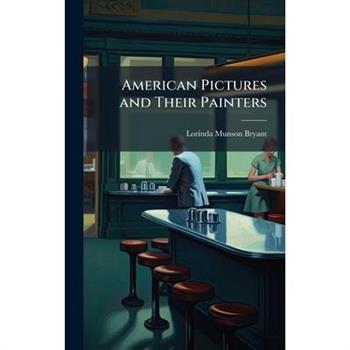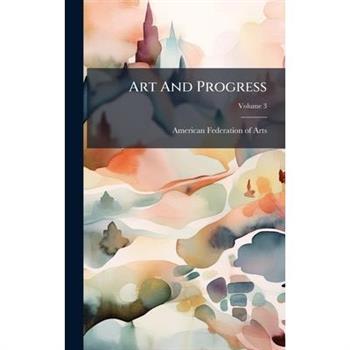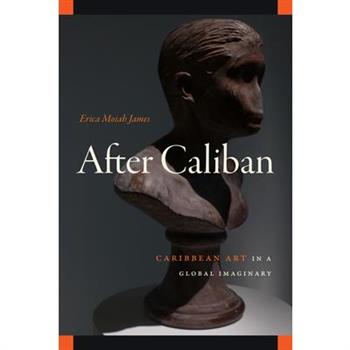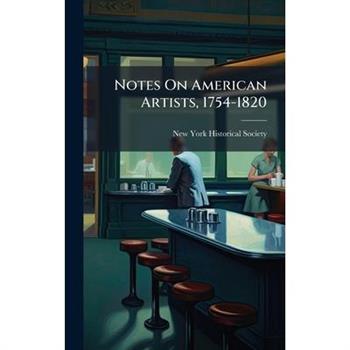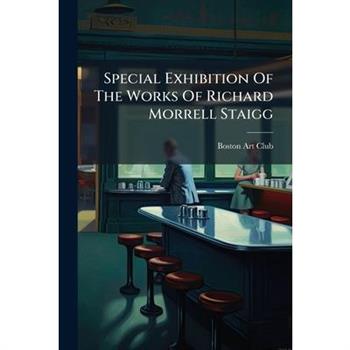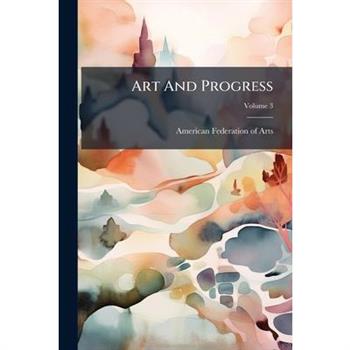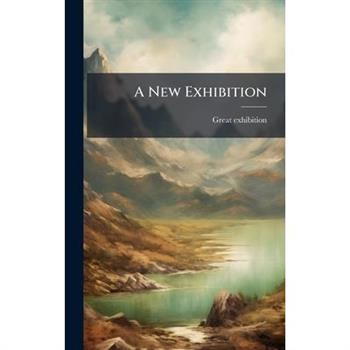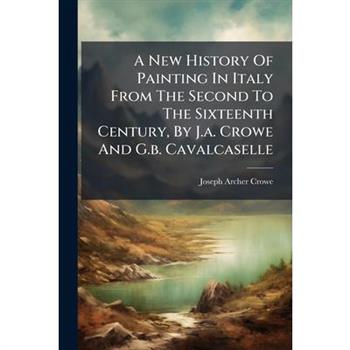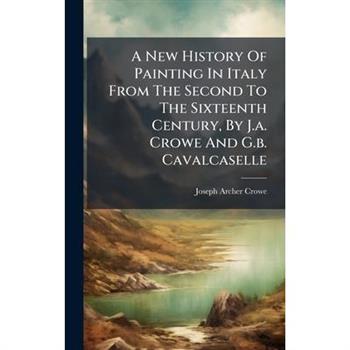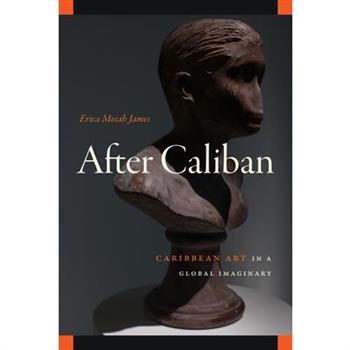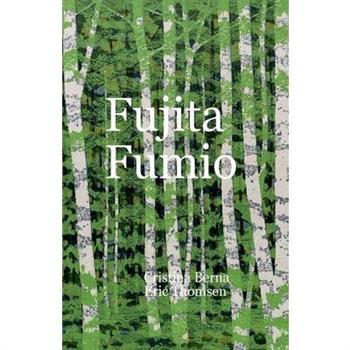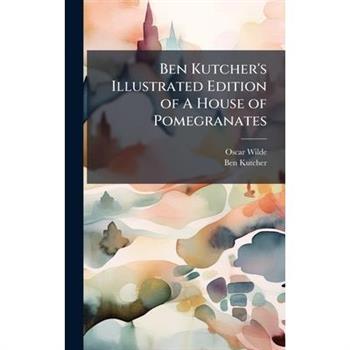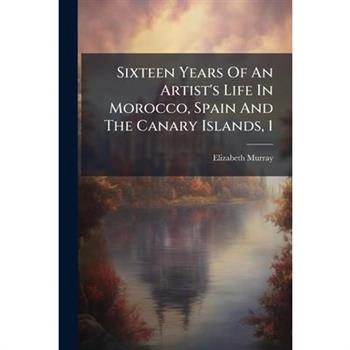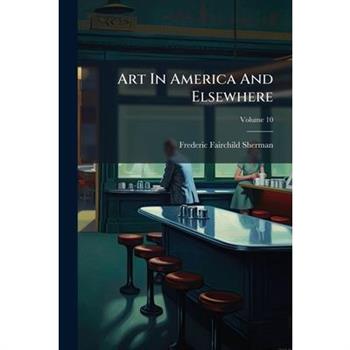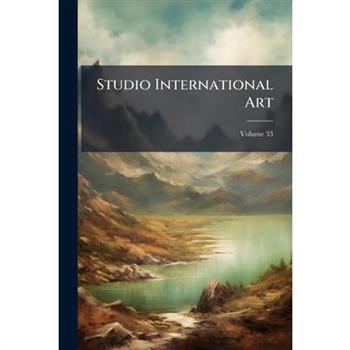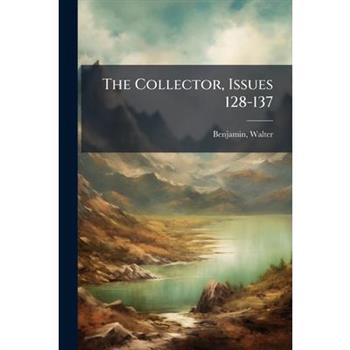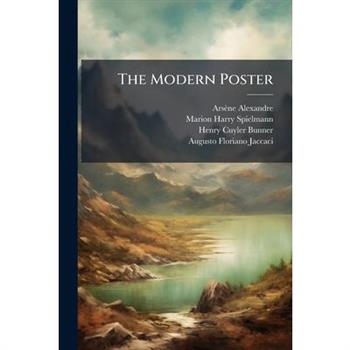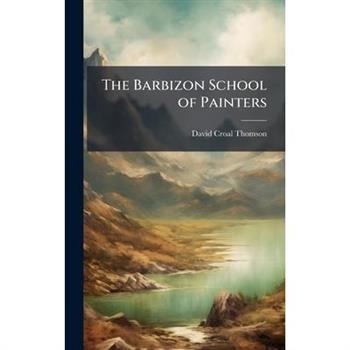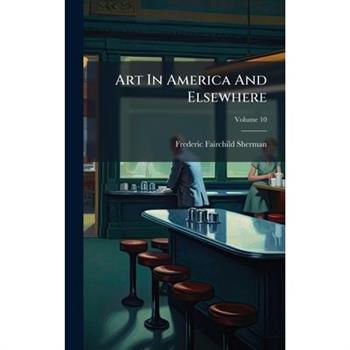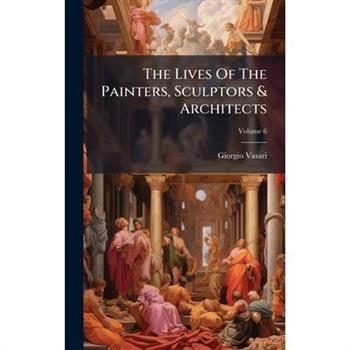Painted Pottery of the Near East in the Second Millennium B.C. and Its Chronological Background
This is a print on demand edition of an important, hard-to-find publication.
The Early Work of Aubrey Beardsley
"The Early Work of Aubrey Beardsley" offers a fascinating glimpse into the formative years of one of the most distinctive and controversial artists of the late 19th century. Featuring a collection of Beardsley's drawings and illustrations, this volume showcases the evolution of his unique style, characterized by bold lines, intricate patterns, and a provocative exploration of themes. Compiled and introduced by H.C. Marillier, this book provides valuable context to Beardsley's early artistic development. Readers will discover the seeds of his later masterpieces in these initial works, witnessing the birth of an aesthetic that would leave an indelible mark on the art world. Explore the daring and decadent world of Aubrey Beardsley, an artist whose influence continues to resonate today.This work has been selected by scholars as being culturally important, and is part of the knowledge base of civilization as we know it. This work was reproduced from the original artifact, and remains as true to the original work as possible. Therefore, you will see the original copyright references, library stamps (as most of these works have been housed in our most important libraries around the world), and other notations in the work.This work is in the public domain in the United States of America, and possibly other nations. Within the United States, you may freely copy and distribute this work, as no entity (individual or corporate) has a copyright on the body of the work.As a reproduction of a historical artifact, this work may contain missing or blurred pages, poor pictures, errant marks, etc. Scholars believe, and we concur, that this work is important enough to be preserved, reproduced, and made generally available to the public. We appreciate your support of the preservation process, and thank you for being an important part of keeping this knowledge alive and relevant.
The Flemish School of Painting;
"The Flemish School of Painting" by Alphonse Jules Wauters offers a detailed exploration of the rich artistic heritage of the Flemish region. Published in 1885, this historical account provides insights into the techniques, styles, and influential figures that defined Flemish painting. The book explores the evolution of the Flemish school, highlighting the unique contributions of its artists and their impact on the broader art world. Wauters's work serves as an invaluable resource for art historians, students, and enthusiasts seeking to understand the nuances and significance of Flemish art. Its enduring appeal lies in its comprehensive coverage and insightful analysis, making it a classic study in the field of art history. Discover the masters and masterpieces that have shaped the artistic landscape and continue to inspire generations.This work has been selected by scholars as being culturally important, and is part of the knowledge base of civilization as we know it. This work was reproduced from the original artifact, and remains as true to the original work as possible. Therefore, you will see the original copyright references, library stamps (as most of these works have been housed in our most important libraries around the world), and other notations in the work.This work is in the public domain in the United States of America, and possibly other nations. Within the United States, you may freely copy and distribute this work, as no entity (individual or corporate) has a copyright on the body of the work.As a reproduction of a historical artifact, this work may contain missing or blurred pages, poor pictures, errant marks, etc. Scholars believe, and we concur, that this work is important enough to be preserved, reproduced, and made generally available to the public. We appreciate your support of the preservation process, and thank you for being an important part of keeping this knowledge alive and relevant.
Hunt
Explore the life and work of William Morris Hunt, a prominent figure in 19th-century American art. This book delves into Hunt's artistic journey, showcasing his significant contributions to painting and his influence on the Boston art scene. Discover the evolution of his style, from early influences to his mature works, and gain insight into the cultural context that shaped his career. Featuring key paintings and biographical details, "Hunt" offers a comprehensive look at an artist whose legacy continues to inspire. A valuable resource for art enthusiasts and scholars alike, this book celebrates the enduring impact of William Morris Hunt on American art history.This work has been selected by scholars as being culturally important, and is part of the knowledge base of civilization as we know it. This work was reproduced from the original artifact, and remains as true to the original work as possible. Therefore, you will see the original copyright references, library stamps (as most of these works have been housed in our most important libraries around the world), and other notations in the work.This work is in the public domain in the United States of America, and possibly other nations. Within the United States, you may freely copy and distribute this work, as no entity (individual or corporate) has a copyright on the body of the work.As a reproduction of a historical artifact, this work may contain missing or blurred pages, poor pictures, errant marks, etc. Scholars believe, and we concur, that this work is important enough to be preserved, reproduced, and made generally available to the public. We appreciate your support of the preservation process, and thank you for being an important part of keeping this knowledge alive and relevant.
American Pictures and Their Painters
"American Pictures and Their Painters" offers a detailed exploration of American art at the beginning of the 20th century. Lorinda Munson Bryant provides insights into the lives and works of prominent American painters, discussing their techniques, influences, and contributions to the artistic landscape. This volume serves as both a historical record and a guide for aspiring artists, offering practical advice and aesthetic appreciation. It explores the development of American artistic identity and its place in the broader world of art, making it a valuable resource for art historians, students, and anyone interested in the rich heritage of American painting.This work has been selected by scholars as being culturally important, and is part of the knowledge base of civilization as we know it. This work was reproduced from the original artifact, and remains as true to the original work as possible. Therefore, you will see the original copyright references, library stamps (as most of these works have been housed in our most important libraries around the world), and other notations in the work.This work is in the public domain in the United States of America, and possibly other nations. Within the United States, you may freely copy and distribute this work, as no entity (individual or corporate) has a copyright on the body of the work.As a reproduction of a historical artifact, this work may contain missing or blurred pages, poor pictures, errant marks, etc. Scholars believe, and we concur, that this work is important enough to be preserved, reproduced, and made generally available to the public. We appreciate your support of the preservation process, and thank you for being an important part of keeping this knowledge alive and relevant.
The Partnership of Paint
Discover the history of paint manufacturing and entrepreneurship in early 20th century America through "The Partnership of Paint" by John W. Masury & Sons. This vintage publication offers insights into the business practices, technological advancements, and artistic considerations of the era's paint industry. Explore the legacy of John W. Masury & Sons, a prominent name in paint production, and their contributions to the decorative arts and building materials sectors. A valuable resource for historians, business scholars, and anyone interested in the evolution of American industry and craftsmanship.This work has been selected by scholars as being culturally important, and is part of the knowledge base of civilization as we know it. This work was reproduced from the original artifact, and remains as true to the original work as possible. Therefore, you will see the original copyright references, library stamps (as most of these works have been housed in our most important libraries around the world), and other notations in the work.This work is in the public domain in the United States of America, and possibly other nations. Within the United States, you may freely copy and distribute this work, as no entity (individual or corporate) has a copyright on the body of the work.As a reproduction of a historical artifact, this work may contain missing or blurred pages, poor pictures, errant marks, etc. Scholars believe, and we concur, that this work is important enough to be preserved, reproduced, and made generally available to the public. We appreciate your support of the preservation process, and thank you for being an important part of keeping this knowledge alive and relevant.
The Early Work of Aubrey Beardsley
"The Early Work of Aubrey Beardsley" offers a fascinating glimpse into the formative years of one of the most distinctive and controversial artists of the late 19th century. Featuring a collection of Beardsley's drawings and illustrations, this volume showcases the evolution of his unique style, characterized by bold lines, intricate patterns, and a provocative exploration of themes. Compiled and introduced by H.C. Marillier, this book provides valuable context to Beardsley's early artistic development. Readers will discover the seeds of his later masterpieces in these initial works, witnessing the birth of an aesthetic that would leave an indelible mark on the art world. Explore the daring and decadent world of Aubrey Beardsley, an artist whose influence continues to resonate today.This work has been selected by scholars as being culturally important, and is part of the knowledge base of civilization as we know it. This work was reproduced from the original artifact, and remains as true to the original work as possible. Therefore, you will see the original copyright references, library stamps (as most of these works have been housed in our most important libraries around the world), and other notations in the work.This work is in the public domain in the United States of America, and possibly other nations. Within the United States, you may freely copy and distribute this work, as no entity (individual or corporate) has a copyright on the body of the work.As a reproduction of a historical artifact, this work may contain missing or blurred pages, poor pictures, errant marks, etc. Scholars believe, and we concur, that this work is important enough to be preserved, reproduced, and made generally available to the public. We appreciate your support of the preservation process, and thank you for being an important part of keeping this knowledge alive and relevant.
The Flemish School of Painting;
"The Flemish School of Painting" by Alphonse Jules Wauters offers a detailed exploration of the rich artistic heritage of the Flemish region. Published in 1885, this historical account provides insights into the techniques, styles, and influential figures that defined Flemish painting. The book explores the evolution of the Flemish school, highlighting the unique contributions of its artists and their impact on the broader art world. Wauters's work serves as an invaluable resource for art historians, students, and enthusiasts seeking to understand the nuances and significance of Flemish art. Its enduring appeal lies in its comprehensive coverage and insightful analysis, making it a classic study in the field of art history. Discover the masters and masterpieces that have shaped the artistic landscape and continue to inspire generations.This work has been selected by scholars as being culturally important, and is part of the knowledge base of civilization as we know it. This work was reproduced from the original artifact, and remains as true to the original work as possible. Therefore, you will see the original copyright references, library stamps (as most of these works have been housed in our most important libraries around the world), and other notations in the work.This work is in the public domain in the United States of America, and possibly other nations. Within the United States, you may freely copy and distribute this work, as no entity (individual or corporate) has a copyright on the body of the work.As a reproduction of a historical artifact, this work may contain missing or blurred pages, poor pictures, errant marks, etc. Scholars believe, and we concur, that this work is important enough to be preserved, reproduced, and made generally available to the public. We appreciate your support of the preservation process, and thank you for being an important part of keeping this knowledge alive and relevant.
Catalogue Raisonne? or, a List of the Pictures in Blenheim Palace
Catalogue Raisonn矇; or, a List of the Pictures in Blenheim Palace, meticulously compiled by George Scharf, offers a detailed inventory of the art collection housed within the historic Blenheim Palace. This catalogue, complete with occasional remarks and illustrative notes, provides invaluable insight into the provenance, artistic merit, and historical context of each painting. Scharf's work stands as a crucial reference for art historians, collectors, and enthusiasts alike, preserving the legacy of these masterpieces and offering a glimpse into the tastes of a bygone era. This catalogue is not merely a list; it is a carefully curated record that brings the art of Blenheim Palace to life. An enduring testament to the importance of preserving cultural heritage.This work has been selected by scholars as being culturally important, and is part of the knowledge base of civilization as we know it. This work was reproduced from the original artifact, and remains as true to the original work as possible. Therefore, you will see the original copyright references, library stamps (as most of these works have been housed in our most important libraries around the world), and other notations in the work.This work is in the public domain in the United States of America, and possibly other nations. Within the United States, you may freely copy and distribute this work, as no entity (individual or corporate) has a copyright on the body of the work.As a reproduction of a historical artifact, this work may contain missing or blurred pages, poor pictures, errant marks, etc. Scholars believe, and we concur, that this work is important enough to be preserved, reproduced, and made generally available to the public. We appreciate your support of the preservation process, and thank you for being an important part of keeping this knowledge alive and relevant.
The Old Masters
The Old Masters, Volume 1 offers a curated selection of one hundred masterpieces from European galleries, reproduced in vibrant color. This volume provides notes on each picture, enhancing the reader's appreciation and understanding of these timeless works. A valuable resource for art enthusiasts, students, and historians, this book showcases the enduring beauty and significance of European artistic heritage. Explore the works of renowned artists and discover the stories behind their creations. Perfect for anyone interested in exploring the rich tapestry of European art history. This collection serves as a testament to the lasting impact of the 'Old Masters' and their contributions to the world of art.This work has been selected by scholars as being culturally important, and is part of the knowledge base of civilization as we know it. This work was reproduced from the original artifact, and remains as true to the original work as possible. Therefore, you will see the original copyright references, library stamps (as most of these works have been housed in our most important libraries around the world), and other notations in the work.This work is in the public domain in the United States of America, and possibly other nations. Within the United States, you may freely copy and distribute this work, as no entity (individual or corporate) has a copyright on the body of the work.As a reproduction of a historical artifact, this work may contain missing or blurred pages, poor pictures, errant marks, etc. Scholars believe, and we concur, that this work is important enough to be preserved, reproduced, and made generally available to the public. We appreciate your support of the preservation process, and thank you for being an important part of keeping this knowledge alive and relevant.
American Pictures and Their Painters
"American Pictures and Their Painters" offers a detailed exploration of American art at the beginning of the 20th century. Lorinda Munson Bryant provides insights into the lives and works of prominent American painters, discussing their techniques, influences, and contributions to the artistic landscape. This volume serves as both a historical record and a guide for aspiring artists, offering practical advice and aesthetic appreciation. It explores the development of American artistic identity and its place in the broader world of art, making it a valuable resource for art historians, students, and anyone interested in the rich heritage of American painting.This work has been selected by scholars as being culturally important, and is part of the knowledge base of civilization as we know it. This work was reproduced from the original artifact, and remains as true to the original work as possible. Therefore, you will see the original copyright references, library stamps (as most of these works have been housed in our most important libraries around the world), and other notations in the work.This work is in the public domain in the United States of America, and possibly other nations. Within the United States, you may freely copy and distribute this work, as no entity (individual or corporate) has a copyright on the body of the work.As a reproduction of a historical artifact, this work may contain missing or blurred pages, poor pictures, errant marks, etc. Scholars believe, and we concur, that this work is important enough to be preserved, reproduced, and made generally available to the public. We appreciate your support of the preservation process, and thank you for being an important part of keeping this knowledge alive and relevant.
Art And Progress
"Art And Progress, Volume 3" offers a fascinating glimpse into the American art scene of the early 20th century, showcasing the works and perspectives championed by the American Federation of Arts. This volume provides a rich tapestry of articles, illustrations, and discussions that capture the dynamic spirit of artistic innovation and the evolving role of art in society. Readers will discover insightful commentary on contemporary exhibitions, profiles of emerging artists, and explorations of various artistic movements that defined the era. As a historical record, "Art And Progress" offers valuable context for understanding the development of American art and its enduring influence on subsequent generations. This volume is an essential resource for art historians, collectors, and anyone interested in the cultural landscape of the United States during a pivotal period of change.This work has been selected by scholars as being culturally important, and is part of the knowledge base of civilization as we know it. This work was reproduced from the original artifact, and remains as true to the original work as possible. Therefore, you will see the original copyright references, library stamps (as most of these works have been housed in our most important libraries around the world), and other notations in the work.This work is in the public domain in the United States of America, and possibly other nations. Within the United States, you may freely copy and distribute this work, as no entity (individual or corporate) has a copyright on the body of the work.As a reproduction of a historical artifact, this work may contain missing or blurred pages, poor pictures, errant marks, etc. Scholars believe, and we concur, that this work is important enough to be preserved, reproduced, and made generally available to the public. We appreciate your support of the preservation process, and thank you for being an important part of keeping this knowledge alive and relevant.
After Caliban
In After Caliban, Erica Moiah James examines the rise of global Caribbean artists in the 1990s and their production of a decolonized art history for the Caribbean. She draws on Aim矇 C矇saire's rewriting of Shakespeare's The Tempest, in which Caliban becomes the sole author of his own story, dissolving his fixed position as colonized in relation to Prospero as colonizer. James shows how visual artists such as Marc Latamie, Janine Antoni, Belkis Ay籀n, Edouard Duval-Carri矇, and Christopher Cozier followed C矇saire's model by employing a range of practices and methodologies that refused marginalization. Just as C矇saire decolonized The Tempest, so too did these artists, who crafted a decolonial aesthetic that redefined their own cultural and historical narratives and positioned art as a key pathway toward a postcolonial future. By providing the foundation for a postcolonial, post-Caliban art world, these artists redefined the critical and popular notion of contemporary Caribbean art. At the same time, James argues, they fulfilled C矇saire's dream for a postcolonial Caribbean while creating a nonhegemonic art historical practice that exists beyond modern binaries and borders.
The Collector, Issues 128-137
"The Collector, Issues 128-137" presents a curated selection of essays and observations reflecting on art, history, and culture. Drawing upon the insights of Walter Benjamin, these issues explore themes of collecting, memory, and the significance of objects in understanding the past. The writings delve into the nuances of European art and its historical context, offering a unique perspective on the relationship between artifacts and their cultural significance.These collections provide valuable insights for art historians, cultural critics, and anyone interested in the intersection of art and society. The essays encourage readers to contemplate the stories behind the objects we collect and the ways in which they shape our understanding of history.This work has been selected by scholars as being culturally important, and is part of the knowledge base of civilization as we know it. This work was reproduced from the original artifact, and remains as true to the original work as possible. Therefore, you will see the original copyright references, library stamps (as most of these works have been housed in our most important libraries around the world), and other notations in the work.This work is in the public domain in the United States of America, and possibly other nations. Within the United States, you may freely copy and distribute this work, as no entity (individual or corporate) has a copyright on the body of the work.As a reproduction of a historical artifact, this work may contain missing or blurred pages, poor pictures, errant marks, etc. Scholars believe, and we concur, that this work is important enough to be preserved, reproduced, and made generally available to the public. We appreciate your support of the preservation process, and thank you for being an important part of keeping this knowledge alive and relevant.
Notes On American Artists, 1754-1820
"Notes On American Artists, 1754-1820" offers a unique glimpse into the early American art scene through the lens of contemporary newspaper advertisements. Compiled by the New-York Historical Society, this compilation provides invaluable primary source material for art historians, researchers, and anyone interested in the cultural landscape of the United States during its formative years. The book meticulously reproduces advertisements related to artists and their work, offering insights into their activities, exhibitions, and the market for art during the period. Covering the period from 1754 to 1820, this resource sheds light on the artistic endeavors and commercial aspects of art in America during the late colonial and early republic eras. Discover the names and stories of artists as they were presented to the public in their own time. This work has been selected by scholars as being culturally important, and is part of the knowledge base of civilization as we know it. This work was reproduced from the original artifact, and remains as true to the original work as possible. Therefore, you will see the original copyright references, library stamps (as most of these works have been housed in our most important libraries around the world), and other notations in the work.This work is in the public domain in the United States of America, and possibly other nations. Within the United States, you may freely copy and distribute this work, as no entity (individual or corporate) has a copyright on the body of the work.As a reproduction of a historical artifact, this work may contain missing or blurred pages, poor pictures, errant marks, etc. Scholars believe, and we concur, that this work is important enough to be preserved, reproduced, and made generally available to the public. We appreciate your support of the preservation process, and thank you for being an important part of keeping this knowledge alive and relevant.
Outlines For The Study Of Art
"Outlines For The Study Of Art: Italian Sculpture And Painting, Issues 1-5" offers a comprehensive exploration of Italian art during a pivotal period in history. This compilation delves into the rich artistic heritage of Italy, focusing on sculpture and painting from the Renaissance. Students and art enthusiasts alike will find value in its detailed examinations of key artists, techniques, and movements. The work provides structured outlines designed to facilitate a deeper understanding of the subject matter. From the early masters to the High Renaissance, the book explores the evolution of Italian artistic expression, highlighting the unique contributions of Italian sculptors and painters. Readers will gain insight into the cultural and historical contexts that shaped these remarkable works of art, making it an invaluable resource for anyone seeking to study Italian Renaissance art in greater depth.This work has been selected by scholars as being culturally important, and is part of the knowledge base of civilization as we know it. This work was reproduced from the original artifact, and remains as true to the original work as possible. Therefore, you will see the original copyright references, library stamps (as most of these works have been housed in our most important libraries around the world), and other notations in the work.This work is in the public domain in the United States of America, and possibly other nations. Within the United States, you may freely copy and distribute this work, as no entity (individual or corporate) has a copyright on the body of the work.As a reproduction of a historical artifact, this work may contain missing or blurred pages, poor pictures, errant marks, etc. Scholars believe, and we concur, that this work is important enough to be preserved, reproduced, and made generally available to the public. We appreciate your support of the preservation process, and thank you for being an important part of keeping this knowledge alive and relevant.
Graphic Illustrations Of Hogarth
This second volume of "Graphic Illustrations Of Hogarth" showcases the celebrated work of William Hogarth, one of the most significant artists of the 18th century. Collected and described by Samuel Ireland, these illustrations offer a detailed look at Hogarth's satirical and moralizing prints, capturing the social life and manners of his time. Featuring a range of Hogarth's most famous works, this volume provides invaluable insight into the artist's techniques and the historical context of his art. Readers will appreciate the detailed engravings and Ireland's insightful commentary, making this a vital resource for art historians, students, and anyone interested in the art and culture of the Georgian era.This work has been selected by scholars as being culturally important, and is part of the knowledge base of civilization as we know it. This work was reproduced from the original artifact, and remains as true to the original work as possible. Therefore, you will see the original copyright references, library stamps (as most of these works have been housed in our most important libraries around the world), and other notations in the work.This work is in the public domain in the United States of America, and possibly other nations. Within the United States, you may freely copy and distribute this work, as no entity (individual or corporate) has a copyright on the body of the work.As a reproduction of a historical artifact, this work may contain missing or blurred pages, poor pictures, errant marks, etc. Scholars believe, and we concur, that this work is important enough to be preserved, reproduced, and made generally available to the public. We appreciate your support of the preservation process, and thank you for being an important part of keeping this knowledge alive and relevant.
The Dance Of Death, Through The Various Stages Of Human Life
"The Dance of Death, Through the Various Stages of Human Life" is a renowned series of woodcuts created by Hans Holbein the Younger, a master artist of the Renaissance. This collection presents a powerful and allegorical depiction of mortality, illustrating Death's presence in all aspects of life, from the peasant's humble dwelling to the king's opulent court. Each scene portrays Death leading individuals from various social strata to their inevitable end, serving as a memento mori and a reflection on the fleeting nature of earthly existence.Holbein's intricate designs and profound symbolism capture the essence of the Renaissance era, blending artistic skill with philosophical contemplation. The series remains a compelling and thought-provoking commentary on life, death, and the human condition. This edition allows readers to experience Holbein's masterpiece and contemplate its enduring message.This work has been selected by scholars as being culturally important, and is part of the knowledge base of civilization as we know it. This work was reproduced from the original artifact, and remains as true to the original work as possible. Therefore, you will see the original copyright references, library stamps (as most of these works have been housed in our most important libraries around the world), and other notations in the work.This work is in the public domain in the United States of America, and possibly other nations. Within the United States, you may freely copy and distribute this work, as no entity (individual or corporate) has a copyright on the body of the work.As a reproduction of a historical artifact, this work may contain missing or blurred pages, poor pictures, errant marks, etc. Scholars believe, and we concur, that this work is important enough to be preserved, reproduced, and made generally available to the public. We appreciate your support of the preservation process, and thank you for being an important part of keeping this knowledge alive and relevant.
A Collection of oil Paintings
"A Collection of Oil Paintings" offers a glimpse into the art world of the late 19th century. This volume showcases a diverse assortment of oil paintings, reflecting the artistic styles and techniques prevalent during that era. Though the individual artists may vary, the compilation provides a cohesive representation of the period's aesthetic sensibilities. This collection serves as a valuable resource for art historians, collectors, and enthusiasts interested in understanding the development and appreciation of oil painting as a significant art form. It captures a moment in time when artistic expression was evolving, making it a relevant and enduring piece for those passionate about art history.This work has been selected by scholars as being culturally important, and is part of the knowledge base of civilization as we know it. This work was reproduced from the original artifact, and remains as true to the original work as possible. Therefore, you will see the original copyright references, library stamps (as most of these works have been housed in our most important libraries around the world), and other notations in the work.This work is in the public domain in the United States of America, and possibly other nations. Within the United States, you may freely copy and distribute this work, as no entity (individual or corporate) has a copyright on the body of the work.As a reproduction of a historical artifact, this work may contain missing or blurred pages, poor pictures, errant marks, etc. Scholars believe, and we concur, that this work is important enough to be preserved, reproduced, and made generally available to the public. We appreciate your support of the preservation process, and thank you for being an important part of keeping this knowledge alive and relevant.
Special Exhibition Of The Works Of Richard Morrell Staigg
Explore the artistic legacy of Richard Morrell Staigg in this special exhibition catalog from the Boston Art Club. Showcasing a curated selection of Staigg's works, this catalog offers insights into his techniques, subjects, and contributions to American art. Delve into the world of a notable 19th-century artist through beautifully reproduced images and informative commentary. This exhibition catalog is a valuable resource for art historians, collectors, and anyone interested in American art history.This work has been selected by scholars as being culturally important, and is part of the knowledge base of civilization as we know it. This work was reproduced from the original artifact, and remains as true to the original work as possible. Therefore, you will see the original copyright references, library stamps (as most of these works have been housed in our most important libraries around the world), and other notations in the work.This work is in the public domain in the United States of America, and possibly other nations. Within the United States, you may freely copy and distribute this work, as no entity (individual or corporate) has a copyright on the body of the work.As a reproduction of a historical artifact, this work may contain missing or blurred pages, poor pictures, errant marks, etc. Scholars believe, and we concur, that this work is important enough to be preserved, reproduced, and made generally available to the public. We appreciate your support of the preservation process, and thank you for being an important part of keeping this knowledge alive and relevant.
Views of Rome. Drawn and Engraved by B. Pinelli
Title: Views of Rome. Drawn and engraved by B. Pinelli.Publisher: British Library, Historical Print EditionsThe British Library is the national library of the United Kingdom. It is one of the world's largest research libraries holding over 150 million items in all known languages and formats: books, journals, newspapers, sound recordings, patents, maps, stamps, prints and much more. Its collections include around 14 million books, along with substantial additional collections of manuscripts and historical items dating back as far as 300 BC.The HISTORY OF THE ANCIENT WORLD collection includes books from the British Library digitised by Microsoft. Titles in this series include lectures, compiled sketches, and chronological discourses on Greece, Rome, and other early European and African civilisations. The collection also has a selection of physical and classical geography texts. ++++The below data was compiled from various identification fields in the bibliographic record of this title. This data is provided as an additional tool in helping to insure edition identification: ++++ British Library Pinelli, Bartolomeo; 1834. 8?簞. 10129.h.11.This work has been selected by scholars as being culturally important, and is part of the knowledge base of civilization as we know it. This work was reproduced from the original artifact, and remains as true to the original work as possible. Therefore, you will see the original copyright references, library stamps (as most of these works have been housed in our most important libraries around the world), and other notations in the work.This work is in the public domain in the United States of America, and possibly other nations. Within the United States, you may freely copy and distribute this work, as no entity (individual or corporate) has a copyright on the body of the work.As a reproduction of a historical artifact, this work may contain missing or blurred pages, poor pictures, errant marks, etc. Scholars believe, and we concur, that this work is important enough to be preserved, reproduced, and made generally available to the public. We appreciate your support of the preservation process, and thank you for being an important part of keeping this knowledge alive and relevant.
Art And Progress
"Art And Progress, Volume 3" offers a fascinating glimpse into the American art scene of the early 20th century, showcasing the works and perspectives championed by the American Federation of Arts. This volume provides a rich tapestry of articles, illustrations, and discussions that capture the dynamic spirit of artistic innovation and the evolving role of art in society. Readers will discover insightful commentary on contemporary exhibitions, profiles of emerging artists, and explorations of various artistic movements that defined the era. As a historical record, "Art And Progress" offers valuable context for understanding the development of American art and its enduring influence on subsequent generations. This volume is an essential resource for art historians, collectors, and anyone interested in the cultural landscape of the United States during a pivotal period of change.This work has been selected by scholars as being culturally important, and is part of the knowledge base of civilization as we know it. This work was reproduced from the original artifact, and remains as true to the original work as possible. Therefore, you will see the original copyright references, library stamps (as most of these works have been housed in our most important libraries around the world), and other notations in the work.This work is in the public domain in the United States of America, and possibly other nations. Within the United States, you may freely copy and distribute this work, as no entity (individual or corporate) has a copyright on the body of the work.As a reproduction of a historical artifact, this work may contain missing or blurred pages, poor pictures, errant marks, etc. Scholars believe, and we concur, that this work is important enough to be preserved, reproduced, and made generally available to the public. We appreciate your support of the preservation process, and thank you for being an important part of keeping this knowledge alive and relevant.
A New Exhibition
Explore the groundbreaking "A New Exhibition", a record of the Great Exhibition of 1851. Held in London's Crystal Palace, this unprecedented event showcased the industrial achievements and cultural innovations of nations from around the globe. "A New Exhibition" offers insights into the Victorian era's fascination with progress, technology, and international collaboration.Discover detailed accounts of the exhibits, the organizers, and the millions of visitors who marveled at the displays. This volume captures the spirit of an age defined by rapid change and boundless optimism, making it an invaluable resource for historians, art enthusiasts, and anyone interested in the legacy of the Industrial Revolution. Relive the grandeur and impact of the Great Exhibition through this historical record.This work has been selected by scholars as being culturally important, and is part of the knowledge base of civilization as we know it. This work was reproduced from the original artifact, and remains as true to the original work as possible. Therefore, you will see the original copyright references, library stamps (as most of these works have been housed in our most important libraries around the world), and other notations in the work.This work is in the public domain in the United States of America, and possibly other nations. Within the United States, you may freely copy and distribute this work, as no entity (individual or corporate) has a copyright on the body of the work.As a reproduction of a historical artifact, this work may contain missing or blurred pages, poor pictures, errant marks, etc. Scholars believe, and we concur, that this work is important enough to be preserved, reproduced, and made generally available to the public. We appreciate your support of the preservation process, and thank you for being an important part of keeping this knowledge alive and relevant.
Men Of The Olo Stone Age
"Men Of The Olo Stone Age: Their Environment, Life And Art" explores the world of early humans during the Paleolithic era. Authored by Henry Fairfield Osborn, the book delves into the environment in which these people lived, offering insights into their daily lives and the remarkable art they produced. From tools and dwellings to cave paintings and sculptures, Osborn illuminates the ingenuity and creativity of our distant ancestors. This detailed study provides a valuable window into a pivotal period of human history.This work has been selected by scholars as being culturally important, and is part of the knowledge base of civilization as we know it. This work was reproduced from the original artifact, and remains as true to the original work as possible. Therefore, you will see the original copyright references, library stamps (as most of these works have been housed in our most important libraries around the world), and other notations in the work.This work is in the public domain in the United States of America, and possibly other nations. Within the United States, you may freely copy and distribute this work, as no entity (individual or corporate) has a copyright on the body of the work.As a reproduction of a historical artifact, this work may contain missing or blurred pages, poor pictures, errant marks, etc. Scholars believe, and we concur, that this work is important enough to be preserved, reproduced, and made generally available to the public. We appreciate your support of the preservation process, and thank you for being an important part of keeping this knowledge alive and relevant.
A New History Of Painting In Italy From The Second To The Sixteenth Century, By J.a. Crowe And G.b. Cavalcaselle
"A New History Of Painting In Italy" by J.A. Crowe and G.B. Cavalcaselle offers a comprehensive survey of Italian painting from the second to the sixteenth century. This seminal work, meticulously researched and eloquently presented, provides invaluable insights into the evolution of artistic styles, techniques, and schools across Italy. Crowe and Cavalcaselle's detailed analysis and critical assessment of numerous artists and their masterpieces make this a cornerstone text for students and enthusiasts of art history.The book explores the rich tapestry of Italian art, examining its historical context and cultural significance. With a focus on the development of painting through different periods, the authors trace the influences and innovations that shaped the Italian Renaissance and beyond. This enduring classic remains an essential resource for understanding the profound impact of Italian painting on Western art.This work has been selected by scholars as being culturally important, and is part of the knowledge base of civilization as we know it. This work was reproduced from the original artifact, and remains as true to the original work as possible. Therefore, you will see the original copyright references, library stamps (as most of these works have been housed in our most important libraries around the world), and other notations in the work.This work is in the public domain in the United States of America, and possibly other nations. Within the United States, you may freely copy and distribute this work, as no entity (individual or corporate) has a copyright on the body of the work.As a reproduction of a historical artifact, this work may contain missing or blurred pages, poor pictures, errant marks, etc. Scholars believe, and we concur, that this work is important enough to be preserved, reproduced, and made generally available to the public. We appreciate your support of the preservation process, and thank you for being an important part of keeping this knowledge alive and relevant.
A New History Of Painting In Italy From The Second To The Sixteenth Century, By J.a. Crowe And G.b. Cavalcaselle
"A New History Of Painting In Italy" by J.A. Crowe and G.B. Cavalcaselle offers a comprehensive survey of Italian painting from the second to the sixteenth century. This seminal work, meticulously researched and eloquently presented, provides invaluable insights into the evolution of artistic styles, techniques, and schools across Italy. Crowe and Cavalcaselle's detailed analysis and critical assessment of numerous artists and their masterpieces make this a cornerstone text for students and enthusiasts of art history.The book explores the rich tapestry of Italian art, examining its historical context and cultural significance. With a focus on the development of painting through different periods, the authors trace the influences and innovations that shaped the Italian Renaissance and beyond. This enduring classic remains an essential resource for understanding the profound impact of Italian painting on Western art.This work has been selected by scholars as being culturally important, and is part of the knowledge base of civilization as we know it. This work was reproduced from the original artifact, and remains as true to the original work as possible. Therefore, you will see the original copyright references, library stamps (as most of these works have been housed in our most important libraries around the world), and other notations in the work.This work is in the public domain in the United States of America, and possibly other nations. Within the United States, you may freely copy and distribute this work, as no entity (individual or corporate) has a copyright on the body of the work.As a reproduction of a historical artifact, this work may contain missing or blurred pages, poor pictures, errant marks, etc. Scholars believe, and we concur, that this work is important enough to be preserved, reproduced, and made generally available to the public. We appreciate your support of the preservation process, and thank you for being an important part of keeping this knowledge alive and relevant.
After Caliban
In After Caliban, Erica Moiah James examines the rise of global Caribbean artists in the 1990s and their production of a decolonized art history for the Caribbean. She draws on Aim矇 C矇saire's rewriting of Shakespeare's The Tempest, in which Caliban becomes the sole author of his own story, dissolving his fixed position as colonized in relation to Prospero as colonizer. James shows how visual artists such as Marc Latamie, Janine Antoni, Belkis Ay籀n, Edouard Duval-Carri矇, and Christopher Cozier followed C矇saire's model by employing a range of practices and methodologies that refused marginalization. Just as C矇saire decolonized The Tempest, so too did these artists, who crafted a decolonial aesthetic that redefined their own cultural and historical narratives and positioned art as a key pathway toward a postcolonial future. By providing the foundation for a postcolonial, post-Caliban art world, these artists redefined the critical and popular notion of contemporary Caribbean art. At the same time, James argues, they fulfilled C矇saire's dream for a postcolonial Caribbean while creating a nonhegemonic art historical practice that exists beyond modern binaries and borders.
Art, Politics, and Palace Eunuchs in Ming China, 1368-1644
This is the first in-depth analysis of the place of the Ming palace eunuchs in the social history of Chinese art, examining the intricate intersections of art, politics, and palace eunuchs in the Ming dynasty.In addition to articulating the elite eunuchs' roles as important power brokers in the political arena, this monograph offers a balanced view of Ming eunuchs, with evidence of their accomplishments as book authors, editors, and compilers, poets, calligraphers, and art collectors, the Confucian scholars' typical literati pursuits. By exploring both the positive and negative roles that palace eunuchs played in the Ming's visual culture, this book reveals that Ming palace eunuchs, as supervisors of both the imperial art collection and the imperial art academy, and as powerful art collectors themselves, made various significant impacts on the contemporary art criticism, art market, and art-collecting patterns.The book will be of interest to scholars working in art history, Sinology, and Chinese studies.
Fujita Fumio
Fumio Fujita (1933 - ) is one of Japan's most well-known contemporary sosaku hanga artists. He was born in Handa City, Aichi Prefecture, about 40 km due south of Nagoya.Fumio Fujita studied at the Musashino College of Fine Arts and began creating woodblock prints in 1963. His subjects are nature based, and he is best known for his many images of trees, especially birch trees - a signature Fujita image. He simplifies and reduces forms to their elements, bordering on abstract, with an emphasis on pattern and texture.His work also encompass the purely abstract and combinations of abstract organic shapes with representational forms. Birds and horses frequently appear in his work. In 1987 he became a full-time lecturer at the Odakyu Culture School department of woodblock printing. Fujita's prints are all pencil signed and numbered, limited editions. His works have been included in the prestigious Collage Women's Association of Japan (CWAJ) exhibitions several times. Fujita's works are becoming increasing collectable, especially some of his earlier designs. His lovely prints would make a wonderful addition to any modern woodblock collection.
Sixteen Years Of An Artist's Life In Morocco, Spain And The Canary Islands, 1
"Sixteen Years Of An Artist's Life In Morocco, Spain And The Canary Islands, 1" offers a captivating glimpse into the life and travels of artist Elizabeth Murray during the 19th century. This volume chronicles her experiences and observations across diverse landscapes and cultures. More than a mere travelogue, it provides insight into the artistic process and the challenges and rewards of pursuing a creative life in unfamiliar surroundings. Murray's vivid descriptions bring to life the sights, sounds, and people she encountered, making this book a valuable resource for those interested in the art, history, and culture of Morocco, Spain, and the Canary Islands. Readers will appreciate the author's unique perspective as an artist navigating a world undergoing significant change.This work has been selected by scholars as being culturally important, and is part of the knowledge base of civilization as we know it. This work was reproduced from the original artifact, and remains as true to the original work as possible. Therefore, you will see the original copyright references, library stamps (as most of these works have been housed in our most important libraries around the world), and other notations in the work.This work is in the public domain in the United States of America, and possibly other nations. Within the United States, you may freely copy and distribute this work, as no entity (individual or corporate) has a copyright on the body of the work.As a reproduction of a historical artifact, this work may contain missing or blurred pages, poor pictures, errant marks, etc. Scholars believe, and we concur, that this work is important enough to be preserved, reproduced, and made generally available to the public. We appreciate your support of the preservation process, and thank you for being an important part of keeping this knowledge alive and relevant.
Historie Und Leben Der Ber?1/4hmtesten Europaeischen Mahler
Explore the lives and legacies of Europe's most celebrated painters in this historical account, "Historie Und Leben Der Ber?1/4hmtesten Europaeischen Mahler." Penned by Roger de Piles, this work offers insights into the artistic achievements and personal stories of master artists. Delve into the rich tapestry of 17th-century European art, gaining a deeper understanding of the techniques, influences, and cultural contexts that shaped their iconic creations.This book serves as a valuable resource for art enthusiasts, historians, and anyone seeking to discover the enduring impact of these influential figures. Discover the historical narratives and artistic contributions that continue to inspire and captivate audiences today.This work has been selected by scholars as being culturally important, and is part of the knowledge base of civilization as we know it. This work was reproduced from the original artifact, and remains as true to the original work as possible. Therefore, you will see the original copyright references, library stamps (as most of these works have been housed in our most important libraries around the world), and other notations in the work.This work is in the public domain in the United States of America, and possibly other nations. Within the United States, you may freely copy and distribute this work, as no entity (individual or corporate) has a copyright on the body of the work.As a reproduction of a historical artifact, this work may contain missing or blurred pages, poor pictures, errant marks, etc. Scholars believe, and we concur, that this work is important enough to be preserved, reproduced, and made generally available to the public. We appreciate your support of the preservation process, and thank you for being an important part of keeping this knowledge alive and relevant.
Ben Kutcher's Illustrated Edition of A House of Pomegranates
Discover the enchanting world of Oscar Wilde's "A House of Pomegranates" in this beautifully illustrated edition by Ben Kutcher. Originally published in 1918, this timeless collection of fairy tales weaves intricate allegories and moral lessons through rich prose and vivid imagery. Kutcher's illustrations perfectly complement Wilde's imaginative storytelling, bringing to life the characters and settings of these captivating tales. A treasure for readers of all ages, this edition offers a unique opportunity to experience Wilde's genius through the combined artistry of two masters.This work has been selected by scholars as being culturally important, and is part of the knowledge base of civilization as we know it. This work was reproduced from the original artifact, and remains as true to the original work as possible. Therefore, you will see the original copyright references, library stamps (as most of these works have been housed in our most important libraries around the world), and other notations in the work.This work is in the public domain in the United States of America, and possibly other nations. Within the United States, you may freely copy and distribute this work, as no entity (individual or corporate) has a copyright on the body of the work.As a reproduction of a historical artifact, this work may contain missing or blurred pages, poor pictures, errant marks, etc. Scholars believe, and we concur, that this work is important enough to be preserved, reproduced, and made generally available to the public. We appreciate your support of the preservation process, and thank you for being an important part of keeping this knowledge alive and relevant.
Sixteen Years Of An Artist's Life In Morocco, Spain And The Canary Islands, 1
"Sixteen Years Of An Artist's Life In Morocco, Spain And The Canary Islands, 1" offers a captivating glimpse into the life and travels of artist Elizabeth Murray during the 19th century. This volume chronicles her experiences and observations across diverse landscapes and cultures. More than a mere travelogue, it provides insight into the artistic process and the challenges and rewards of pursuing a creative life in unfamiliar surroundings. Murray's vivid descriptions bring to life the sights, sounds, and people she encountered, making this book a valuable resource for those interested in the art, history, and culture of Morocco, Spain, and the Canary Islands. Readers will appreciate the author's unique perspective as an artist navigating a world undergoing significant change.This work has been selected by scholars as being culturally important, and is part of the knowledge base of civilization as we know it. This work was reproduced from the original artifact, and remains as true to the original work as possible. Therefore, you will see the original copyright references, library stamps (as most of these works have been housed in our most important libraries around the world), and other notations in the work.This work is in the public domain in the United States of America, and possibly other nations. Within the United States, you may freely copy and distribute this work, as no entity (individual or corporate) has a copyright on the body of the work.As a reproduction of a historical artifact, this work may contain missing or blurred pages, poor pictures, errant marks, etc. Scholars believe, and we concur, that this work is important enough to be preserved, reproduced, and made generally available to the public. We appreciate your support of the preservation process, and thank you for being an important part of keeping this knowledge alive and relevant.
Art, Artists And Landscape Painting
"Art, Artists and Landscape Painting" explores the rich history and techniques of landscape painting. William James Laidlay delves into the artistic movements and key figures that shaped the genre. From discussions on composition and color theory to practical advice on capturing the beauty of nature, this volume offers insights for both aspiring and seasoned artists. Discover the secrets to creating compelling landscape paintings and gain a deeper appreciation for the artistic vision behind them. A valuable resource for art enthusiasts and practitioners alike.This work has been selected by scholars as being culturally important, and is part of the knowledge base of civilization as we know it. This work was reproduced from the original artifact, and remains as true to the original work as possible. Therefore, you will see the original copyright references, library stamps (as most of these works have been housed in our most important libraries around the world), and other notations in the work.This work is in the public domain in the United States of America, and possibly other nations. Within the United States, you may freely copy and distribute this work, as no entity (individual or corporate) has a copyright on the body of the work.As a reproduction of a historical artifact, this work may contain missing or blurred pages, poor pictures, errant marks, etc. Scholars believe, and we concur, that this work is important enough to be preserved, reproduced, and made generally available to the public. We appreciate your support of the preservation process, and thank you for being an important part of keeping this knowledge alive and relevant.
Hunt
Explore the life and work of William Morris Hunt, a prominent figure in 19th-century American art. This book delves into Hunt's artistic journey, showcasing his significant contributions to painting and his influence on the Boston art scene. Discover the evolution of his style, from early influences to his mature works, and gain insight into the cultural context that shaped his career. Featuring key paintings and biographical details, "Hunt" offers a comprehensive look at an artist whose legacy continues to inspire. A valuable resource for art enthusiasts and scholars alike, this book celebrates the enduring impact of William Morris Hunt on American art history.This work has been selected by scholars as being culturally important, and is part of the knowledge base of civilization as we know it. This work was reproduced from the original artifact, and remains as true to the original work as possible. Therefore, you will see the original copyright references, library stamps (as most of these works have been housed in our most important libraries around the world), and other notations in the work.This work is in the public domain in the United States of America, and possibly other nations. Within the United States, you may freely copy and distribute this work, as no entity (individual or corporate) has a copyright on the body of the work.As a reproduction of a historical artifact, this work may contain missing or blurred pages, poor pictures, errant marks, etc. Scholars believe, and we concur, that this work is important enough to be preserved, reproduced, and made generally available to the public. We appreciate your support of the preservation process, and thank you for being an important part of keeping this knowledge alive and relevant.
A Brief Notice Of The Ancient Paintings Found In The Subterranean Basilica Of S. Clement In Rome, The Dates Of Wich Vary From The End Of The Third To About The Beginning Of The Tenth Century
"A Brief Notice Of The Ancient Paintings Found In The Subterranean Basilica Of S. Clement In Rome" by Revd. Joseph Mullooly O. P., explores the historical significance of the ancient paintings discovered within the Basilica of San Clemente in Rome. This work offers a focused examination of these artworks, which date from the late third to the early tenth century. Delving into the artistic and historical context, Mullooly provides insights into the basilica's subterranean layers and the invaluable paintings preserved within. This brief notice serves as an important resource for art historians, religious scholars, and anyone interested in the intersection of art, history, and faith during the early Christian era.This work has been selected by scholars as being culturally important, and is part of the knowledge base of civilization as we know it. This work was reproduced from the original artifact, and remains as true to the original work as possible. Therefore, you will see the original copyright references, library stamps (as most of these works have been housed in our most important libraries around the world), and other notations in the work.This work is in the public domain in the United States of America, and possibly other nations. Within the United States, you may freely copy and distribute this work, as no entity (individual or corporate) has a copyright on the body of the work.As a reproduction of a historical artifact, this work may contain missing or blurred pages, poor pictures, errant marks, etc. Scholars believe, and we concur, that this work is important enough to be preserved, reproduced, and made generally available to the public. We appreciate your support of the preservation process, and thank you for being an important part of keeping this knowledge alive and relevant.
Pictures in the Collection of P. A. B. Widener at Lynnewood Hall, Elkins Park, Pennsylvania, British and Modern French Schools
Pictures in the Collection of P. A. B. Widener offers a detailed look at the British and Modern French paintings housed at Lynnewood Hall, the opulent estate of Peter A. B. Widener in Elkins Park, Pennsylvania. Compiled in 1915, this volume provides a historical snapshot of a significant private art collection, showcasing works that reflect Widener's taste and patronage. Art enthusiasts and historians will appreciate this glimpse into a bygone era of collecting, preserving the legacy of important artworks and the connoisseurship that shaped their assembly.This work has been selected by scholars as being culturally important, and is part of the knowledge base of civilization as we know it. This work was reproduced from the original artifact, and remains as true to the original work as possible. Therefore, you will see the original copyright references, library stamps (as most of these works have been housed in our most important libraries around the world), and other notations in the work.This work is in the public domain in the United States of America, and possibly other nations. Within the United States, you may freely copy and distribute this work, as no entity (individual or corporate) has a copyright on the body of the work.As a reproduction of a historical artifact, this work may contain missing or blurred pages, poor pictures, errant marks, etc. Scholars believe, and we concur, that this work is important enough to be preserved, reproduced, and made generally available to the public. We appreciate your support of the preservation process, and thank you for being an important part of keeping this knowledge alive and relevant.
Art In America And Elsewhere
"Art In America And Elsewhere, Volume 10" offers a collection of critical essays and observations on American art and its place in the broader art world. Penned by Frederic Fairchild Sherman, this volume provides insights into the art scene of the early 20th century through a contemporary lens. The essays explore various artistic movements, individual artists, and the aesthetic principles shaping American art during this period. Sherman's analysis provides valuable historical context and a deeper understanding of the artistic trends that defined the era. A worthy read for art historians, critics, and anyone interested in the evolution of American artistic identity.This work has been selected by scholars as being culturally important, and is part of the knowledge base of civilization as we know it. This work was reproduced from the original artifact, and remains as true to the original work as possible. Therefore, you will see the original copyright references, library stamps (as most of these works have been housed in our most important libraries around the world), and other notations in the work.This work is in the public domain in the United States of America, and possibly other nations. Within the United States, you may freely copy and distribute this work, as no entity (individual or corporate) has a copyright on the body of the work.As a reproduction of a historical artifact, this work may contain missing or blurred pages, poor pictures, errant marks, etc. Scholars believe, and we concur, that this work is important enough to be preserved, reproduced, and made generally available to the public. We appreciate your support of the preservation process, and thank you for being an important part of keeping this knowledge alive and relevant.
The Wilkie Gallery
"The Wilkie Gallery" offers a curated selection of the finest works by the late Sir David Wilkie, a celebrated Scottish painter and Royal Academician. This collection showcases his exceptional talent and includes his renowned Spanish and Oriental sketches. The volume features biographical and critical notices that provide insight into Wilkie's life and artistic achievements. Published in 1848, this gallery serves as a lasting tribute to Wilkie's contribution to the art world. The book includes engravings by Francis Holl and was printed by Richard Clay, underscoring the high-quality production values of the era. "The Wilkie Gallery" remains a valuable resource for art historians, collectors, and anyone interested in 19th-century art and the life of a remarkable artist.This work has been selected by scholars as being culturally important, and is part of the knowledge base of civilization as we know it. This work was reproduced from the original artifact, and remains as true to the original work as possible. Therefore, you will see the original copyright references, library stamps (as most of these works have been housed in our most important libraries around the world), and other notations in the work.This work is in the public domain in the United States of America, and possibly other nations. Within the United States, you may freely copy and distribute this work, as no entity (individual or corporate) has a copyright on the body of the work.As a reproduction of a historical artifact, this work may contain missing or blurred pages, poor pictures, errant marks, etc. Scholars believe, and we concur, that this work is important enough to be preserved, reproduced, and made generally available to the public. We appreciate your support of the preservation process, and thank you for being an important part of keeping this knowledge alive and relevant.
Studio International Art
Studio International Art, Volume 33 presents a valuable snapshot of the international art scene as it existed at the time of publication. This volume offers readers a deep dive into critical perspectives, historical contexts, and theoretical frameworks shaping artistic discourse. Exploring a variety of movements, artists, and exhibitions, this collection serves as an essential resource for scholars, art enthusiasts, and anyone interested in the evolution of modern and contemporary art.The essays within provide insights into the trends and debates that defined the era, making it a significant addition to any art history collection. Its enduring value lies in its ability to capture the spirit of artistic innovation and intellectual inquiry during a pivotal period in art history.This work has been selected by scholars as being culturally important, and is part of the knowledge base of civilization as we know it. This work was reproduced from the original artifact, and remains as true to the original work as possible. Therefore, you will see the original copyright references, library stamps (as most of these works have been housed in our most important libraries around the world), and other notations in the work.This work is in the public domain in the United States of America, and possibly other nations. Within the United States, you may freely copy and distribute this work, as no entity (individual or corporate) has a copyright on the body of the work.As a reproduction of a historical artifact, this work may contain missing or blurred pages, poor pictures, errant marks, etc. Scholars believe, and we concur, that this work is important enough to be preserved, reproduced, and made generally available to the public. We appreciate your support of the preservation process, and thank you for being an important part of keeping this knowledge alive and relevant.
The Collector, Issues 128-137
"The Collector, Issues 128-137" presents a curated selection of essays and observations reflecting on art, history, and culture. Drawing upon the insights of Walter Benjamin, these issues explore themes of collecting, memory, and the significance of objects in understanding the past. The writings delve into the nuances of European art and its historical context, offering a unique perspective on the relationship between artifacts and their cultural significance.These collections provide valuable insights for art historians, cultural critics, and anyone interested in the intersection of art and society. The essays encourage readers to contemplate the stories behind the objects we collect and the ways in which they shape our understanding of history.This work has been selected by scholars as being culturally important, and is part of the knowledge base of civilization as we know it. This work was reproduced from the original artifact, and remains as true to the original work as possible. Therefore, you will see the original copyright references, library stamps (as most of these works have been housed in our most important libraries around the world), and other notations in the work.This work is in the public domain in the United States of America, and possibly other nations. Within the United States, you may freely copy and distribute this work, as no entity (individual or corporate) has a copyright on the body of the work.As a reproduction of a historical artifact, this work may contain missing or blurred pages, poor pictures, errant marks, etc. Scholars believe, and we concur, that this work is important enough to be preserved, reproduced, and made generally available to the public. We appreciate your support of the preservation process, and thank you for being an important part of keeping this knowledge alive and relevant.
The Modern Poster
"The Modern Poster" explores the burgeoning art form of the late 19th century, showcasing the aesthetic and cultural significance of posters as a medium. Authored by Ars癡ne Alexandre, Marion Harry Spielmann, Henry Cuyler Bunner, and Augusto Floriano Jaccaci, this work delves into the techniques, artists, and social impact of poster design during its golden age. Illustrated with numerous examples, the book examines the role of posters in advertising, propaganda, and artistic expression. From the vibrant streets of Paris to the emerging urban landscapes of America, "The Modern Poster" captures the dynamism of a visual revolution. Discover the enduring legacy of this influential art form and its continued relevance in contemporary design.This work has been selected by scholars as being culturally important, and is part of the knowledge base of civilization as we know it. This work was reproduced from the original artifact, and remains as true to the original work as possible. Therefore, you will see the original copyright references, library stamps (as most of these works have been housed in our most important libraries around the world), and other notations in the work.This work is in the public domain in the United States of America, and possibly other nations. Within the United States, you may freely copy and distribute this work, as no entity (individual or corporate) has a copyright on the body of the work.As a reproduction of a historical artifact, this work may contain missing or blurred pages, poor pictures, errant marks, etc. Scholars believe, and we concur, that this work is important enough to be preserved, reproduced, and made generally available to the public. We appreciate your support of the preservation process, and thank you for being an important part of keeping this knowledge alive and relevant.
The Wilkie Gallery
"The Wilkie Gallery" offers a curated selection of the finest works by the late Sir David Wilkie, a celebrated Scottish painter and Royal Academician. This collection showcases his exceptional talent and includes his renowned Spanish and Oriental sketches. The volume features biographical and critical notices that provide insight into Wilkie's life and artistic achievements. Published in 1848, this gallery serves as a lasting tribute to Wilkie's contribution to the art world. The book includes engravings by Francis Holl and was printed by Richard Clay, underscoring the high-quality production values of the era. "The Wilkie Gallery" remains a valuable resource for art historians, collectors, and anyone interested in 19th-century art and the life of a remarkable artist.This work has been selected by scholars as being culturally important, and is part of the knowledge base of civilization as we know it. This work was reproduced from the original artifact, and remains as true to the original work as possible. Therefore, you will see the original copyright references, library stamps (as most of these works have been housed in our most important libraries around the world), and other notations in the work.This work is in the public domain in the United States of America, and possibly other nations. Within the United States, you may freely copy and distribute this work, as no entity (individual or corporate) has a copyright on the body of the work.As a reproduction of a historical artifact, this work may contain missing or blurred pages, poor pictures, errant marks, etc. Scholars believe, and we concur, that this work is important enough to be preserved, reproduced, and made generally available to the public. We appreciate your support of the preservation process, and thank you for being an important part of keeping this knowledge alive and relevant.
Pictures in the Collection of P. A. B. Widener at Lynnewood Hall, Elkins Park, Pennsylvania, British and Modern French Schools
Pictures in the Collection of P. A. B. Widener offers a detailed look at the British and Modern French paintings housed at Lynnewood Hall, the opulent estate of Peter A. B. Widener in Elkins Park, Pennsylvania. Compiled in 1915, this volume provides a historical snapshot of a significant private art collection, showcasing works that reflect Widener's taste and patronage. Art enthusiasts and historians will appreciate this glimpse into a bygone era of collecting, preserving the legacy of important artworks and the connoisseurship that shaped their assembly.This work has been selected by scholars as being culturally important, and is part of the knowledge base of civilization as we know it. This work was reproduced from the original artifact, and remains as true to the original work as possible. Therefore, you will see the original copyright references, library stamps (as most of these works have been housed in our most important libraries around the world), and other notations in the work.This work is in the public domain in the United States of America, and possibly other nations. Within the United States, you may freely copy and distribute this work, as no entity (individual or corporate) has a copyright on the body of the work.As a reproduction of a historical artifact, this work may contain missing or blurred pages, poor pictures, errant marks, etc. Scholars believe, and we concur, that this work is important enough to be preserved, reproduced, and made generally available to the public. We appreciate your support of the preservation process, and thank you for being an important part of keeping this knowledge alive and relevant.
The Barbizon School of Painters
"The Barbizon School of Painters" explores the influential group of mid-19th century French artists who revolutionized landscape painting. This book delves into the lives and works of key figures such as Th矇odore Rousseau, Jean-Fran癟ois Millet, and Charles-Fran癟ois Daubigny, examining their shared commitment to painting directly from nature. David Croal Thomson provides insights into the Barbizon School's artistic techniques, philosophical underpinnings, and lasting impact on the development of Impressionism and modern art. Readers will gain a comprehensive understanding of the Barbizon School's significance in art history and its enduring appeal to artists and art enthusiasts alike.This work has been selected by scholars as being culturally important, and is part of the knowledge base of civilization as we know it. This work was reproduced from the original artifact, and remains as true to the original work as possible. Therefore, you will see the original copyright references, library stamps (as most of these works have been housed in our most important libraries around the world), and other notations in the work.This work is in the public domain in the United States of America, and possibly other nations. Within the United States, you may freely copy and distribute this work, as no entity (individual or corporate) has a copyright on the body of the work.As a reproduction of a historical artifact, this work may contain missing or blurred pages, poor pictures, errant marks, etc. Scholars believe, and we concur, that this work is important enough to be preserved, reproduced, and made generally available to the public. We appreciate your support of the preservation process, and thank you for being an important part of keeping this knowledge alive and relevant.
Art In America And Elsewhere
"Art In America And Elsewhere, Volume 10" offers a collection of critical essays and observations on American art and its place in the broader art world. Penned by Frederic Fairchild Sherman, this volume provides insights into the art scene of the early 20th century through a contemporary lens. The essays explore various artistic movements, individual artists, and the aesthetic principles shaping American art during this period. Sherman's analysis provides valuable historical context and a deeper understanding of the artistic trends that defined the era. A worthy read for art historians, critics, and anyone interested in the evolution of American artistic identity.This work has been selected by scholars as being culturally important, and is part of the knowledge base of civilization as we know it. This work was reproduced from the original artifact, and remains as true to the original work as possible. Therefore, you will see the original copyright references, library stamps (as most of these works have been housed in our most important libraries around the world), and other notations in the work.This work is in the public domain in the United States of America, and possibly other nations. Within the United States, you may freely copy and distribute this work, as no entity (individual or corporate) has a copyright on the body of the work.As a reproduction of a historical artifact, this work may contain missing or blurred pages, poor pictures, errant marks, etc. Scholars believe, and we concur, that this work is important enough to be preserved, reproduced, and made generally available to the public. We appreciate your support of the preservation process, and thank you for being an important part of keeping this knowledge alive and relevant.
Studio International Art
Studio International Art, Volume 33 presents a valuable snapshot of the international art scene as it existed at the time of publication. This volume offers readers a deep dive into critical perspectives, historical contexts, and theoretical frameworks shaping artistic discourse. Exploring a variety of movements, artists, and exhibitions, this collection serves as an essential resource for scholars, art enthusiasts, and anyone interested in the evolution of modern and contemporary art.The essays within provide insights into the trends and debates that defined the era, making it a significant addition to any art history collection. Its enduring value lies in its ability to capture the spirit of artistic innovation and intellectual inquiry during a pivotal period in art history.This work has been selected by scholars as being culturally important, and is part of the knowledge base of civilization as we know it. This work was reproduced from the original artifact, and remains as true to the original work as possible. Therefore, you will see the original copyright references, library stamps (as most of these works have been housed in our most important libraries around the world), and other notations in the work.This work is in the public domain in the United States of America, and possibly other nations. Within the United States, you may freely copy and distribute this work, as no entity (individual or corporate) has a copyright on the body of the work.As a reproduction of a historical artifact, this work may contain missing or blurred pages, poor pictures, errant marks, etc. Scholars believe, and we concur, that this work is important enough to be preserved, reproduced, and made generally available to the public. We appreciate your support of the preservation process, and thank you for being an important part of keeping this knowledge alive and relevant.
The Lives Of The Painters, Sculptors & Architects
Giorgio Vasari's "The Lives of the Painters, Sculptors & Architects" (Volume 6) offers invaluable insights into the Italian Renaissance. This volume continues Vasari's biographical accounts of prominent artists, architects, and sculptors, providing rich details of their lives, techniques, and major works. Vasari's writing provides a critical framework for understanding the artistic achievements of the Renaissance. His biographies offer readers a unique window into the personalities and professional environments that shaped some of history's most celebrated creative figures. Art historians and enthusiasts alike will appreciate Vasari's blend of historical narrative and artistic criticism, making this volume an essential resource for studying Renaissance art and its lasting influence.This work has been selected by scholars as being culturally important, and is part of the knowledge base of civilization as we know it. This work was reproduced from the original artifact, and remains as true to the original work as possible. Therefore, you will see the original copyright references, library stamps (as most of these works have been housed in our most important libraries around the world), and other notations in the work.This work is in the public domain in the United States of America, and possibly other nations. Within the United States, you may freely copy and distribute this work, as no entity (individual or corporate) has a copyright on the body of the work.As a reproduction of a historical artifact, this work may contain missing or blurred pages, poor pictures, errant marks, etc. Scholars believe, and we concur, that this work is important enough to be preserved, reproduced, and made generally available to the public. We appreciate your support of the preservation process, and thank you for being an important part of keeping this knowledge alive and relevant.




